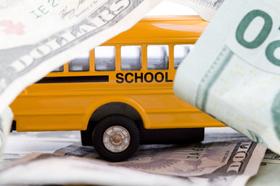Through President Obama’s stimulus plans, public schools across the country are gearing up for a new source of income. Subsequently, many community members are wondering how their local schools will choose to spend the new funds. According to national reports, many schools are choosing to spend their stimulus money in unique, and much needed ways.
Public Education Stimulus Package
As AJC News reports, public schools across the country are being provided with an incredibly large stimulus check to boost school and student performance. Specifically, the new public school stimulus package is designed to provide specialized support and assistance to schools serving special education students, homeless children, and lower-income families with children. With these focus areas, the package has set aside approximately $712 million dollars for public schools.
As schools debate ways to most effectively use the funds, the United States Education Secretary, Arne Duncan, asserts that school leaders should strive to think in new, different, and creative ways. For example, as AJC further reveals, “Schools can spend the money on one-time expenses —- such as teacher training or technology aides for students with disabilities —- that can have long-term benefits for student learning.”
This video reports on President Obama's Race to the Top program.
In analyzing the funds set aside to initiate new and improved programs, The Salt Lake Tribune reveals that, in addition to directly targeted funding (to special needs and low-income students), states are also being individually provided with stabilization funds. These stabilization funds, totaling $32.6 billion dollars, are set aside to help states customize a recovery plan to allow each state to fill in gaps in education, service sectors, and other budgets.
How the Schools are Spending the Stimulus
As schools evaluate their stimulus income, leaders are forced to make tough decisions as to how their money will be most wisely spent. Many communities and school members argue that the funds should be used to retain teacher jobs, especially as thousands of teachers are being laid off due to a drop in funding from local or state tax support. For example, as The Salt Lake Tribune further reveals, even with the assistance of the stimulus package, Salt Lake schools will be coping with a 5.2 percent decrease in educational funding for the upcoming school year. With this loss, one school district in the area alone will be laying off 29 full-time administrative positions, while teachers will also be replaced by lower-cost teacher assistants.
While teacher retention is certainly imperative for student success and progress, many school leaders argue that the funds would be better spent creating enhanced academic resources. For example, some schools are looking into creating after-school reading and literacy programs, in addition to purchasing new textbooks and technological tools for learning.
This video offers an analysis of President Obama's education program.
As many schools are struggling to balance their budgets, financial and school experts are realizing that even if they feel the money is best spent on teacher retention, this would only be a short-term solution. Once the teachers' salaries are paid, the money from the stimulus package would be gone. Inevitably, this path could lead to an empty well, forcing schools to simply delay layoffs instead of completely avoiding them.
Stimulus for the Future
As schools debate over how to spend the stimulus money, the government has been clear on the basic direction in which all schools should focus. Essentially, as the government passes out the stimulus package money over the course of the next few years, schools will only receive additional stimulus if they meet specific progress goals. Specifically, schools receiving stimulus money will have to improve teacher effectiveness while also only hiring highly qualified educators.
Furthermore, all schools must provide students with pre-college support and career readiness programs, while schools must also focus on specializing their support for special needs and lower-income students.
As a result, school leaders will be making tough decisions as the summer gradually approaches. Considering that schools will most likely need to report their financial choices and progress to the government officials, leaders are feeling the pressure to push the federal pennies to their greatest potential.
Questions? Contact us on Facebook. @publicschoolreview














